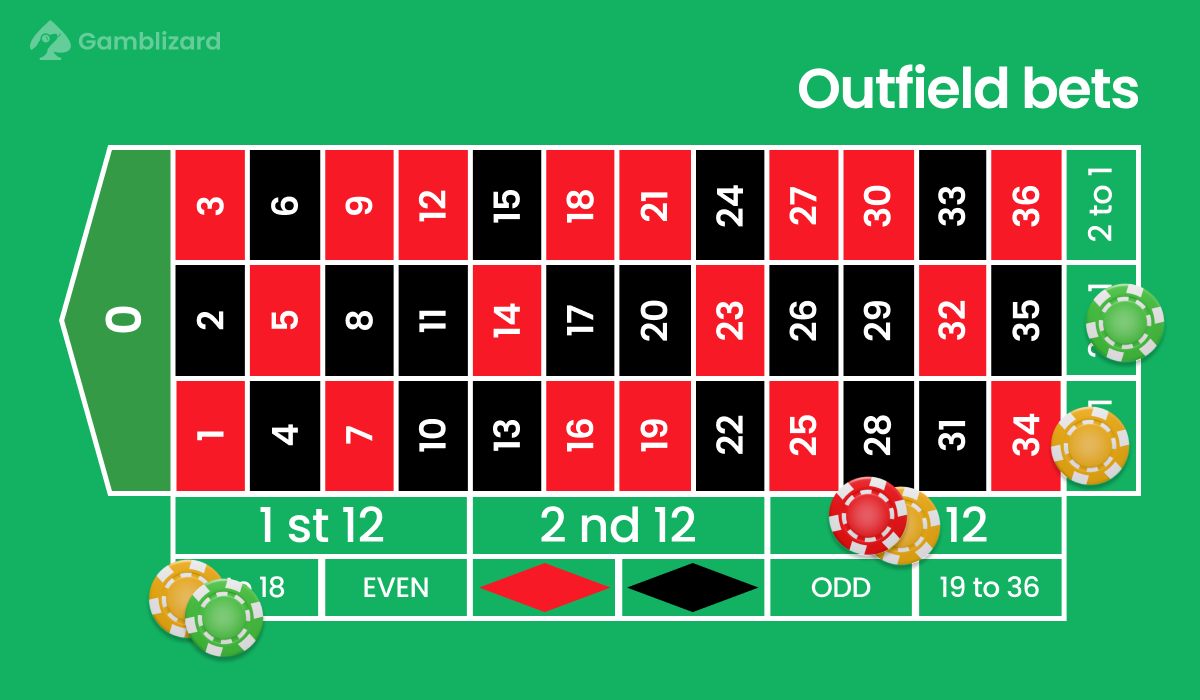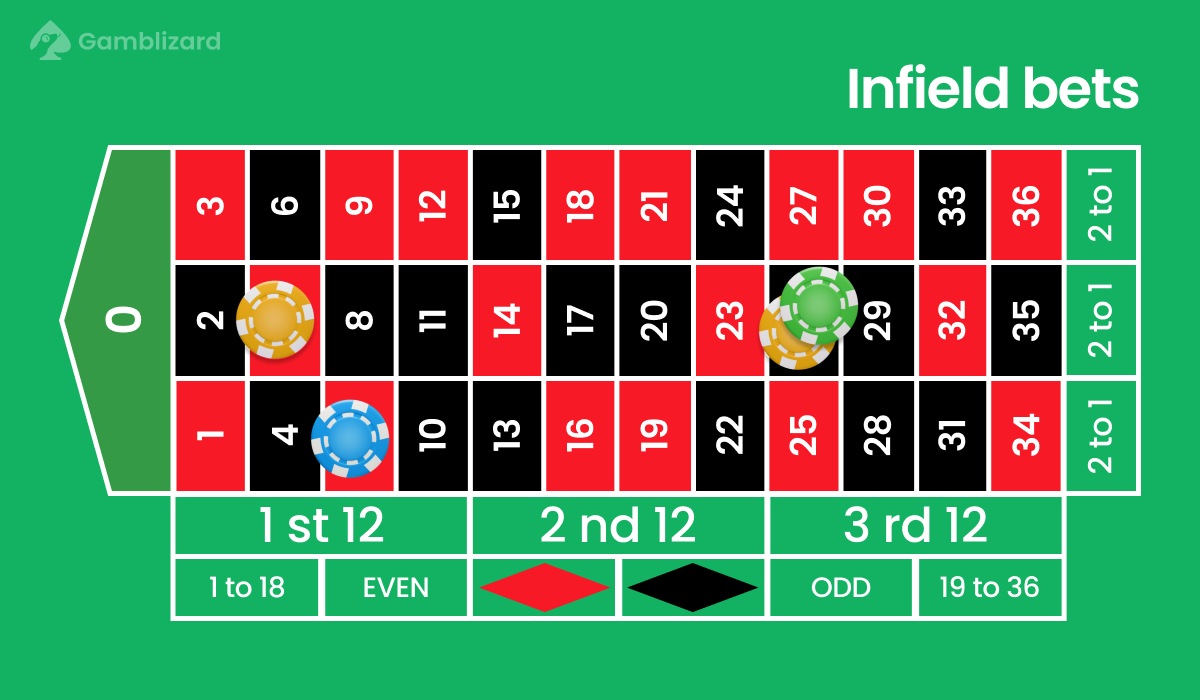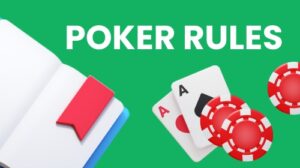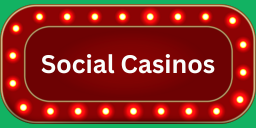Roulette Guide
- Roulette Rules for All Participants
- Types of Bets in Roulette
- Outside Bets
- Inside Bets
- Call Bets (Special Bets)
- Combination Bets
- What is the payout for “green” in roulette?
- Common Rules Across Roulette Games
- Roulette Odds
- Theoretical Return to Player (RTP)
- Useful Features in Online Roulette
- Roulette Strategies for Managing Your Budget
- Roulette Glossary – Common Roulette Terms
- Tips for New Players to Win at Roulette
- Players’ Insights
Roulette rules will guide you step by step on how to play this game. Understanding roulette rules is more than just knowing where to place your chips — it’s about making informed betting choices that can protect your bankroll and help you get the most out of each spin. While the rules may vary slightly between different versions, the general gameplay remains the same.
Players place their bets on selected numbers on the roulette table, and the spinning ball in the wheel will determine whether the player’s guess is correct when it lands in a numbered pocket.
Each winning bet is paid based on the amount wagered and the payout odds for that specific bet type. All losing bets are collected by the house, which is where the “house edge” comes into play — something we’ll explain in detail to help you avoid costly assumptions about even-money bets being truly 50/50. Losing bets are collected by the house.
This guide not only explains the rules and versions of roulette but also gives practical advice, common mistakes to avoid, and tips from our expert Jamie Wall, who has seen first-hand how new players can lose money quickly by overlooking small but critical details in the rules.
Roulette Rules for All Participants
Below, we introduce the rules for European Roulette, as this version is most commonly used in online casino games.
If you’re unsure which type of roulette you’re playing online, you can view the detailed instructions in the game’s settings. This quick check can prevent surprises later, such as discovering too late that you’re playing American Roulette with a higher house edge. These will tell you which rules apply to you.
The general gameplay of roulette follows these steps:
- Placing Bets: Players place their bets on the roulette table. Be aware of the time limit for placing bets — in live dealer and land-based games, placing chips too late will void your bet. You can bet on inside and outside bets, as well as special bets.
- Dealer’s Announcement: Once all players have placed their bets, the dealer announces, “no more bets.” From this point, your wagers are locked in, and changing or adding bets is no longer possible. The betting round ends and the game begins.
- Spinning the Wheel: The dealer spins the roulette wheel in one direction and throws a small ball in the opposite direction. The wheel and ball continue spinning until the ball lands in one of the numbered pockets.
- Declaring the Winner: Players who have bet on the winning number or another correct outcome are paid out according to their bet and the roulette odds. Losing bets are collected by the house.
- Next Round: Players can now place new bets for the next round, and the game continues in the same manner.
While these rules apply to online and live roulette games, they also work for roulette played at land-based casinos. In auto-roulette, rounds are faster and betting windows can be shorter, so plan your bet layout in advance.
Types of Bets in Roulette
Though the objective of roulette is simple, the various betting options offer multiple strategic possibilities. Knowing which bets to prioritise can help you manage your bankroll — start with outside bets to learn the flow of the game before experimenting with higher-risk inside bets.
- Outside Bets: These have lower risk but also lower payout ratios.
- Inside and Special Bets: These are harder to hit but come with much higher payouts. They’re suited to players willing to accept bigger bankroll swings and the possibility of faster losses.
Additionally, players can place multiple bets in the same round. For example, some players allocate roughly 70–80% of their budget to low-risk outside bets and 20–30% to higher-risk inside bets to balance stability with occasional larger wins. Each bet is independent and can win or lose without affecting the others.
For example, you can bet on the number 17 and also place a bet on the red colour, even though 17 is a black number. Combination bets increase the cost of the round, but they can improve your chances of hitting at least one winning outcome.
Outside Bets
Outside bets are a great way to start playing roulette. They have the highest probability of winning but offer smaller returns per bet, making them a sensible option for players who want to extend their playtime and reduce volatility. The name comes from the location of the betting areas on the roulette table—outside bets are closest to the player.
Using outside bets allows you to keep your bankroll going longer since the wins are more frequent. Below is a table that shows the different outside bets you can place your chips on:
| Outside Bet | Payout | Explanation |
|---|---|---|
| Red/Black | 1:1 | Bet on whether the winning number will be red or black. |
| Even/Odd | 1:1 | Bet on whether the winning number will be even or odd. |
| Low/High | 1:1 | Bet on either low numbers (1-18) or high numbers (19-36). |
| Dozen | 2:1 | Bet on one of three groups of 12 numbers (1st 12, 2nd 12, 3rd 12). |
| Column | 2:1 | Bet on one of the three columns containing 12 numbers (2 to 1). |
These bets are a safer way to start the game, offering more frequent but smaller wins, which helps extend your playtime. Remember: even-money outside bets still lose when the ball lands on zero — that’s the house edge at work.
Inside Bets
Inside bets in roulette focus on individual numbers or small groups of numbers. While they can produce the largest payouts, their probability of winning is much lower, so consider limiting these to a small portion of your session budget.
Inside bets are ideal for players who are willing to take bigger risks in hopes of winning larger sums in a single round. Beginners should try these in free play mode first to understand the risk before using real money. They also offer flexible ways to combine different bet types and build roulette strategies.
Below is a list of all the inside bets in roulette, along with their payout ratios:
| Inside Bet | Payout | Explanation |
|---|---|---|
| 1 Number (Straight Bet) | 35:1 | Bet on a single number. You can choose any number between 0–36. |
| 2 Numbers (Split Bet) | 17:1 | Bet on two adjacent numbers. Place the chip between the two numbers, either vertically or horizontally. |
| 3 Numbers (Street Bet) | 11:1 | Bet on a row of three numbers. For example, place a bet on 1, 2, and 3 by placing the chip on the line between 1 and the edge of the table. |
| 4 Numbers (Corner Bet) | 8:1 | Bet on four numbers that form a square, such as 17, 18, 20, and 21. |
| 6 Numbers (Six Line Bet) | 5:1 | Bet on six numbers across two rows, for example, 16, 17, 18 and 19, 20, 21. |
| 5 Numbers (Basket Bet) | 6:1 | This bet is specific to American roulette and covers 0, 00, 1, 2, and 3. It carries the highest house edge of any standard bet and is generally not recommended for long sessions. |
These inside bets are for those who want to go after bigger wins by placing bets on more specific numbers or combinations. Keep stakes modest to manage volatility.
Call Bets (Special Bets)
Call bets cover specific groups of numbers on the roulette wheel and are commonly seen in French roulette but can also be found in some European roulette games. These bets are placed on the racetrack, an oval-shaped betting area that represents the numbers as they appear on the physical wheel. The racetrack allows players to place bets on specific sectors of the roulette wheel. These bets require familiarity with the wheel layout and are typically used by experienced players who want to cover strategic sectors efficiently.
Here’s a table of the call bets you can use in roulette:
| Special Bet | Payout | Explanation |
|---|---|---|
| Neighbours of Zero | 17:1 to 35:1 | A bet using 9 chips on 17 numbers surrounding zero on the wheel. |
| Thirds of the Wheel | 17:1 | A bet using 6 chips on 12 numbers located on the opposite side of zero. |
| Orphans | 17:1 to 35:1 | A bet using 5 chips on 8 numbers not covered by Voisins du Zéro or Tiers du Cylindre. |
| Zero Game | 26:1 | A bet using 4 chips on numbers near zero: 0, 3, 12, 15, 26, 32, and 35. |
| Final Numbers | 35:1 | A bet on all numbers that end with the same digit (e.g., 3, 13, 23, 33). |
| Split Final Numbers | 17:1 to 35:1 | A bet on numbers that end with two different digits (e.g., 3 and 6). |
These bets are placed on specific sections of the wheel and are often favoured by more advanced players looking to cover broader parts of the wheel with strategic bets.
Combination Bets
Can you combine racetrack special bets with regular roulette bets?
Yes, in roulette, you can combine special bets with regular bets. This lets you spread risk and potentially hit multiple wins in a single spin, though it also increases your total stake for the round. For example, you can place a special bet like Voisins du Zéro and at the same time, place a regular bet like a straight up bet on a specific number.
Many players choose to combine outside, inside, and special bets to create their own strategies. For example, a player might place a red/black bet and simultaneously make a corner bet to balance the risk between higher and lower variance wagers.
All winning bets are paid according to the roulette odds, and the losing bets go to the house.
What is the payout for “green” in roulette?
In roulette, “green” refers to the number 0 in European and French roulette or the numbers 0 and 00 in American roulette. The zeros are marked in green on the roulette wheel, and their payout is the same as for any straight bet on a single number: 35:1.
Since zero does not fall under red/black, even/odd, or low/high bets, all outside bets with a 1:1 payout lose if the ball lands on zero. In American roulette, the addition of the double zero means this situation happens more often, further increasing the house edge.
This rule is why the house has an advantage in roulette. The chance of winning is never exactly 50:50, and the two green pockets in American roulette increase the house edge further.
Common Rules Across Roulette Games
Roulette exists in various forms, both as table games and live casino games. While each version has its unique features, roulette rules are generally based on either European, American, or French roulette.
Next, we’ll cover the rules for European, American, and French roulette in detail so you can choose the version that best fits your skill level, risk tolerance, and budget.

European Roulette
European roulette uses a single zero (0). The roulette wheel has 37 pockets in total: numbers 1–36 and one pocket marked with a zero (0). The numbers 1–36 alternate between red and black, while the zero is always green.
The roulette table features a grid of the same numbers found on the wheel. Outside bets like red/black, even/odd, dozens, and columns are placed outside the number grid, while inside bets are placed directly on the numbers or intersections.
Special racetrack bets are also possible in some European roulette games. If the ball lands on zero, all bets that do not include zero lose (unless a special rule is in place).

American Roulette
American roulette has two green pockets: zero (0) and double zero (00), for a total of 38 pockets. The numbers 1–36 alternate between red and black pockets.
A unique feature in American roulette is the Basket Bet, which covers five numbers: 0, 00, 1, 2, and 3. The payout for this bet is 6:1, but it also carries the highest house edge of any common bet (up to 7.89%), making it one of the least recommended options for longer sessions.
When the ball lands in either of the green pockets, all bets that do not include 0 or 00 lose.

French Roulette
French roulette looks similar to European roulette but includes French terms and two special rules related to the zero. For example, the betting area includes “Manque” (1–18) and “Passe” (19–36). The racetrack is commonly used, and the dealer announces “rien ne va plus” when betting ends.
French roulette is known for offering a lower house edge on even-money bets thanks to special rules that apply when the ball lands on zero.

La Partage Rule
The La Partage rule applies when a player has placed an even-money bet (like red/black) and the ball lands on zero. Instead of losing the entire bet, the player only loses half of it.
For example, if you bet $20 on black and the ball lands on zero, you get $10 back and lose only $10.
This rule reduces the house edge, making the game more favorable for the player. Without the La Partage rule, you would lose your entire bet, as zero is neither red nor black.

En Prison Rule
The En Prison rule comes into play when a player has placed an even-money bet (such as even/odd) and the ball lands on zero. In this case, the bet remains on the table, “imprisoned” for the next round.
If the player wins the next round, they get their original bet back without any additional winnings. Without the En Prison rule, you would lose your bet immediately.
For example, if you bet $20 on even numbers and the ball lands on zero, your bet is “frozen.” If the next spin results in an even number, you get your $20 back. You only lose your bet if the next outcome is an odd number.
The En Prison rule is especially favorable for players as it gives them a chance to recover their bet.
Roulette Odds
Roulette odds indicate how many times your original bet is paid back if your guess is correct. The odds are tied to how many numbers the bet covers and its risk level. Inside and special bets have higher payouts because they are harder to achieve, while outside bets offer lower payouts but hit more often.
The best roulette payout is 35:1 for a straight-up bet on a single number. For example, if you bet $10 on a number and win, you receive $350 in profit plus your original $10 bet, for a total of $360. However, the probability of hitting a single number is only about 2.70% on a European wheel.
The least risky bets are those with 1:1 odds. If you bet $10 and win, you earn $10 in profit, making a total of $20 with your original bet included. Note that these are not truly 50/50 because of the zero(s).
| Bet Type | Payout | Probability (EU) |
|---|---|---|
| Single number (straight-up) | 35:1 | 2.70% |
| Two numbers (split) | 17:1 | 5.41% |
| Three numbers (street) | 11:1 | 8.11% |
| Four numbers (corner) | 8:1 | 10.81% |
| Five numbers (basket – US only) | 6:1 | 13.16% (on 38-pocket wheel) |
| Six numbers (line) | 5:1 | 16.22% |
| Column | 2:1 | 32.43% |
| Dozen | 2:1 | 32.43% |
| Low (1–18) / High (19–36) | 1:1 | 48.65% |
| Even / Odd | 1:1 | 48.65% |
| Red / Black | 1:1 | 48.65% |
Theoretical Return to Player (RTP)
The theoretical return to player (RTP) is calculated over the long term. It predicts how much of the money wagered is returned to players but doesn’t guarantee specific winnings in the short run.
- European roulette: RTP ~97.3% (house edge ~2.7%).
- American roulette: RTP ~94.74% (house edge ~5.26%).
- French roulette (even-money with La Partage/En Prison): RTP up to ~98.65% (house edge ~1.35%).
Useful Features in Online Roulette
Online roulette offers several advantages that you won’t find at traditional casinos. The rounds are faster, and winnings can be transferred to your account. While the rules of roulette are the main focus, the following features improve the gameplay and can support your betting discipline:
- Repeat: Replay the exact same bet from the previous round — useful for a stable layout.
- Double: Double the bet amount for the same bet. Use with caution; set a stop-loss if you’re applying progression systems.
- Clear: Remove all your bets from the table — helpful if you change your plan at the last second.
- Undo: Removes your last bet only — good for quick corrections.
- Save Bet: Save a betting pattern you regularly use so you can place it quickly before the timer ends.
- Recent Results / Hot & Cold Numbers: Interesting for reference, but avoid treating them as predictors. Each spin is independent.
Additionally, online roulette allows you to play from home or on the go. Mobile tables are fast — plan your layout to avoid missing betting windows.
Roulette Strategies for Managing Your Budget
Roulette is a game of chance. Each round is independent, and past results do not affect future outcomes. No betting system can eliminate the house edge over time; strategies only shape your risk and volatility.
Set practical limits before you start: a session budget, a maximum loss you’re willing to accept, and a modest profit goal. Once any of these are reached, step away.
- Flat betting: Same stake each spin. Easiest for tracking results and controlling volatility.
- Progressions (e.g., Martingale, D’Alembert): Can recover losses in the short term but risk hitting table limits or bankroll caps. Always define a clear stop-loss.
- Sector coverage (with call bets): Useful for experienced players to spread risk across wheel sections, but total stake rises quickly.
If you’re an advanced player and want to go deeper, check out our detailed Roulette Strategy Guide.
Roulette Glossary – Common Roulette Terms
Using the correct terms helps avoid misunderstandings, which can prevent incorrect bets or other issues during play. Below, you can learn the key roulette terms that will make your gameplay smoother and quicker.
Roulette Terms and Explanations
| Term | Explanation |
|---|---|
| Biased Numbers | Numbers that the ball tends to land on more often than others. |
| d’Alembert | A betting strategy where the player increases their bet by one unit after a loss and decreases it by one after a win. |
| En Prison | A rule where, if the ball lands on 0, a 1:1 bet remains for the next round instead of losing. |
| First 5 or First 4 | In American roulette, this bet covers numbers 0, 00, 1, 2, and 3. In European roulette, it covers 0, 1, 2, and 3. |
| Fibonacci | A betting strategy based on the Fibonacci sequence. |
| Flat Betting | Betting the same amount on the same outcome each round. |
| Follow the Leader | A strategy where the player bets on the outcome that won in the previous round. |
| Labouchère System | A strategy where the player adds the amounts of wins and losses to a series and bets the sum of the first and last numbers. |
| Martingale | A strategy where the player doubles their bet after each loss. |
| Corner Bet | A bet on four numbers that meet at a corner on the roulette table. |
| Against the Bank | Betting the same amount from round to round. |
| Special Line, Basket Bet | A five-number bet in American roulette covering 0, 00, 1, 2, and 3. |
| Split Bet | A bet is placed on two adjacent or vertically aligned numbers. |
| Sprinkler | A player who bets randomly without a set strategy. |
| The numbered slots on the roulette wheel where the ball lands. |
Tips for New Players to Win at Roulette
- Choose European or French tables: Lower house edge than American.
- Look for La Partage / En Prison: Keeps half or all of your even-money stake in play when zero hits.
- Use outside bets to learn pace: They hit more often and stabilise your session.
- Practice free demos: Test layouts and timing before staking real money.
- Set limits: Define session budget, stop-loss, and a small profit target.
- Avoid the Basket Bet in American: Highest house edge among common bets.
Example beginner session: With a $100 budget, consider $2–$4 per spin on outside bets across 30–40 spins. Add occasional small inside bets only if your budget allows.
Keep in mind that your betting style may differ when playing with real money. Adjust your plan based on your actual bankroll and table limits.
Stefan NedeljkovicFact Checker
Players’ Insights
Roulette players understand that there can be more than one winner in roulette. This is reflected in their betting strategies, where they balance high-risk and low-risk bets to suit their budget.
Advanced players often place multiple bets in the same round and may explore rarer versions of the game to keep things interesting.
Here are some tips for players:



 Stefan Nedeljkovic
Stefan Nedeljkovic













